New search Hide text from Guidelines
J ANTIINFECTIVES FOR SYSTEMIC USEAntiinfectives are also classified in the following groups:
A01AB Antiinfectives and antiseptics for local oral treatment
A02BD Combinations for eradication of Helicobacter pylori
A07A Intestinal antiinfectives
D01 Antifungals for dermatological use
D06 Antibiotics and chemotherapeutics for dermatological use
D07C Corticosteroids, combinations with antibiotics
D09AA Ointment dressings with antiinfectives
D10AF Antiinfectives for treatment of acne
G01 Gynecological antiinfectives and antiseptics
P Antiparasitic products, insecticides and repellents
R02AB Antibiotics
S01/
S02/
S03 Eye and ear preparations with antiinfectives
Even systemically administered antibacterials and antimycotics may be classified in other groups if their target is exclusively local, e.g. the skin - D01 - Antifungals for dermatological use.
Inhaled antiinfectives are classified in J.
| The DDDs for the antiinfectives are as a main rule based on the use in infections of moderate severity. However, some antiinfectives are only used in severe infections and their DDDs are assigned accordingly. The DDDs assigned are based on daily treatment. The duration of the treatment periods is not taken into consideration. For antiinfectives given in a high initially starting dose followed by a lower daily "maintenance" dose, the DDDs are based on the "maintenance" dose if the total duration of the treat-ment course is more than one week. If, however, the treatment course is 7 days or less, the DDDs are assigned according to the average daily dose i.e. the total course dose divided by the number of treatment days (e.g azithromycin). |
J01 ANTIBACTERIALS FOR SYSTEMIC USE
This group comprises antibacterials for systemic use, except antimycobacterials, which are classified in J04. The antibacterials are classified according to their mode of action and chemistry.
Combinations of two or more systemic antibacterials from different third levels are classified in J01R, except combinations of sulfonamides and trimethoprim, which are classified at a separate 4th level, J01EE.
Combinations of antibacterials and tuberculostatics are classified in J04AM.
Combinations of antibacterials with other drugs, including local anesthetics or vitamins, are classified at separate 5th levels in the respective antibacterial group by using the 50-series.
Inhaled antiinfectives are classified here based on the fact that preparations for inhalation can not be separated from preparations for injection.
J02 ANTIMYCOTICS FOR SYSTEMIC USE
J04 ANTIMYCOBACTERIALS
This group comprises drugs mainly used for the treatment of tuberculosis or lepra. However, streptomycins are classified in J01G - Aminoglycoside antibacterials. Streptomycin in combination with antimycobacterials are classified in J04AM.
J05 ANTIVIRALS FOR SYSTEMIC USE
This group comprises specific antiviral agents, excl. vaccines.
Antivirals for dermatological use, see D06BB.
Antivirals for ophthalmological use, see S01A - Antiinfectives.
Amantadine, which is also used as an antiviral agent, is classified in N04BB.
J06 IMMUNE SERA AND IMMUNOGLOBULINS
| No DDDs have been assigned, with a few exceptions. |
J07 VACCINES
The vaccines are divided in bacterial, viral and combinations of bacterial and viral at separate ATC 3rd levels. Subdivision at the 4th level is made mainly according to indication. The ATC 5th level does not reflect the manufacturing process, e.g. recombinant is not included in the level names.
Combinations of vaccines within the same 3rd level are given separate 5th levels using the 50-series. 5th levels may contain adjuvans.
See comments under the 4th levels.
| No DDDs have been assigned. |
Last updated: 2024-01-26

